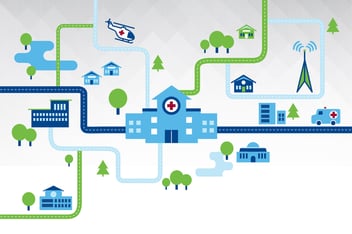I was happy to be heading off to NGPX in Indian Wells last week just so I could get some warmth and sunshine. I was even happier when I managed to find a seat in the jam-packed main session room after getting there a bit late on the first day. It was great to see so many people filling up the room and sitting in rapt attention as one speaker after another hopped-on stage to give powerful, concise presentations and panels.
It's hard to summarize an entire conference in one short blog post, but there were some key takeaways for the patient experience leaders who were able to get out to NGPX this year:
- We all need to get back to the basics and get that right before we do much else
- We need to put as much attention on our staff engagement as we do on patient engagement
- We must be able to embrace change
Digging down a bit more there were a few speakers who had simple words of wisdom that really spoke to me:
- We need to build trust, and that means we need to put empathy first
- We have to think beyond patients as we look at how we engage. Journey mapping is no longer just the patient journey—it’s the journey for every human who comes through your organization.
- Also, the patient journey should be seen as a lifetime journey. Come back to it over and over again. It is going to change. (See note above about embracing change)
- There’s a fine balance between removing friction for people by creating some simple transactional opportunities like easy scheduling through a mobile platform and making things so transactional that the healthcare experience is depersonalized. Ideally, we want to make the tedious things easier and more efficient so that there are more opportunities for personal interactions between patients and providers.
- Data offers so many ways to personalize the healthcare experience. Think about Spotify and Netflix. There are some exciting things on the horizon for more personalized experiences!
There were a couple of book recommendations that were mentioned as well. I wrote them down and I will share those here as well:
- Compassionomics: The Revolutionary Scientific Evidence That Caring Makes a Difference
- Patients Come Second: Leading Change by Changing the Way You Lead
Finally, I had some conversations with people in various roles and a couple of things stood out to me. The main thing is that everyone is struggling with largely the same batch of problems today. Most people said that staffing continues to be an issue and that they don’t think that is going to get much better. Instead, they will need to change the way they do things to make the most of what they have.
A great example of this was in a conversation about mobile wayfinding. We often hear that organizations are ok with the costs and burdens associated with patients who get lost in their facilities because they have a culture in which they have told all staff to stop and help any patient who looks lost or in need. In the post-pandemic world that has changed for two reasons. First, patients and visitors have gotten used to contactless experiences and now they would prefer not to be stopped by a staff person. Instead, they want the ability to use their smartphone to navigate a healthcare campus. Second, facilities simply don’t have the staff and volunteer resources any longer to support that.
In one of the sessions, someone said they had heard that for a provider to complete every task they are supposed to do in a day it would take 27 hours. Another panelist joked it would be twice that for a nurse. Given that reality, it makes even more sense that stopping to take patients where they need to go just isn’t realistic anymore. The approach will have to change to meet the current circumstances but that doesn’t mean the new experience is a bad one. It might even be better (remember the note about embracing change).
All this summary of NGPX is to say that at the end of the day, we are all in this together and sometimes we need to get back to the basics and be open to change. To my mind, those are all good things.


